In the southwest of Phnom Penh lies the region's largest surviving rainforest. After landing, I met other travel companions to spend three nights together at a riverside camp. We were split into two vans and headed for Sihanoukville. Downtown shophouses and heavy traffic gave way to lush scenery. No sooner had the hustle faded into the distance than rice paddies, palm trees and mountains came into sight. Here, Cambodia's nature remains undisturbed. In more or less two hours, we arrived at the camp depot.
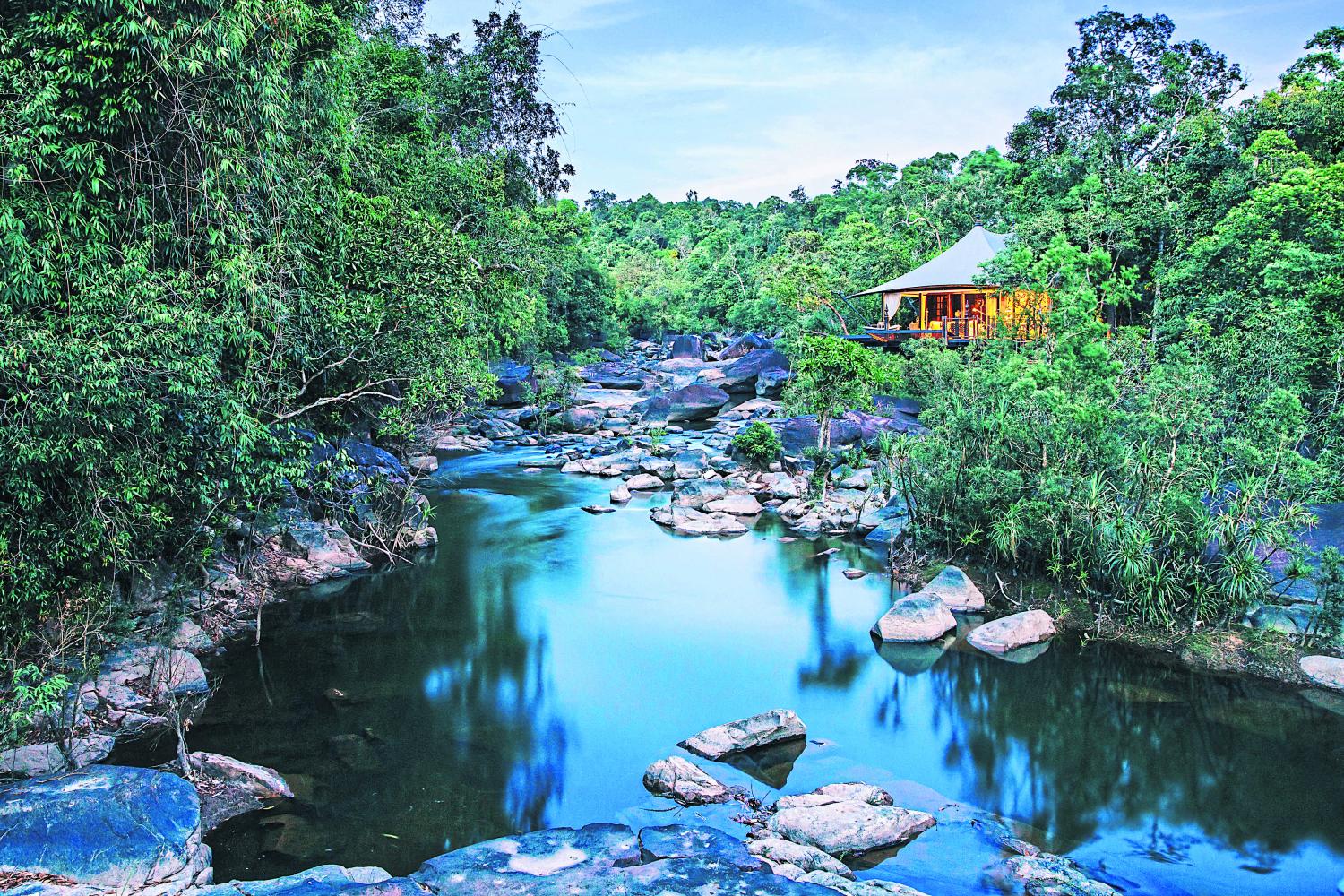
Guests stay in a private tent perched on the riverbank. (Photos © Shinta Mani Wild)
"Would you like to zipline or travel further by car?" a staff member asked. We decided to try something new. A once-in-a-lifetime experience. Having transferred our luggage, we hopped on army jeeps and went off-road. It was bumpy and muddy. There were fresh signs of downpour that had persisted for two weeks. Soon, we were dropped off at a seven-storey tower.
After donning equipment, I clipped into a cable and slid down the 400m line. I did not dare turn back to say goodbye to friends. Rather, I grabbed the handrail tightly, holding myself stiff for fear of heights. The rainforest that sprawls out into the horizon slid into the corner of my vision. Wind slapped my face. In less than a minute, I landed on a tower and waited for others to catch up. Crossing a hanging bridge, we stood in awe of a roaring waterfall. A puff of mist dawdled in the air. A short ride then carried us to Shinta Mani Wild eco-camp.
After a brief spell of sunshine, rain began to pour. We took refuge in a small bar perched on the bank of the Tmor Rung River. Sipping a welcome drink, I relished the verdant landscape of Cardamom National Park. The white noise of the cascade provided a soothing background. At this time of the year, weather conditions irrationally morph from humid to chilly.
"Cambodia is suffering from extreme seasonality disorder. In monsoon, tourists are not coming. We are desperate to break the perception that it is not a good time to travel," said Shinta Mani Wild general manager David Steyn. "Now, it is a beautiful time to come."
Shinta Mani Wild is the brainchild of Bill Bensley, a self-described jack of all trades who practices architecture, interior design and conservation. It is located on government land designated for logging. Along with Sokoun Chanpreda, he purchased the land and saved it from becoming a titanium mine. In partnership with the Shinta Mani Foundation and Wildlife Alliance, he set up the tented camp to bring a more sustainable way of life to villagers. It employs 120 staff, 70% of whom are native inhabitants, with the goal of completely local sourcing.
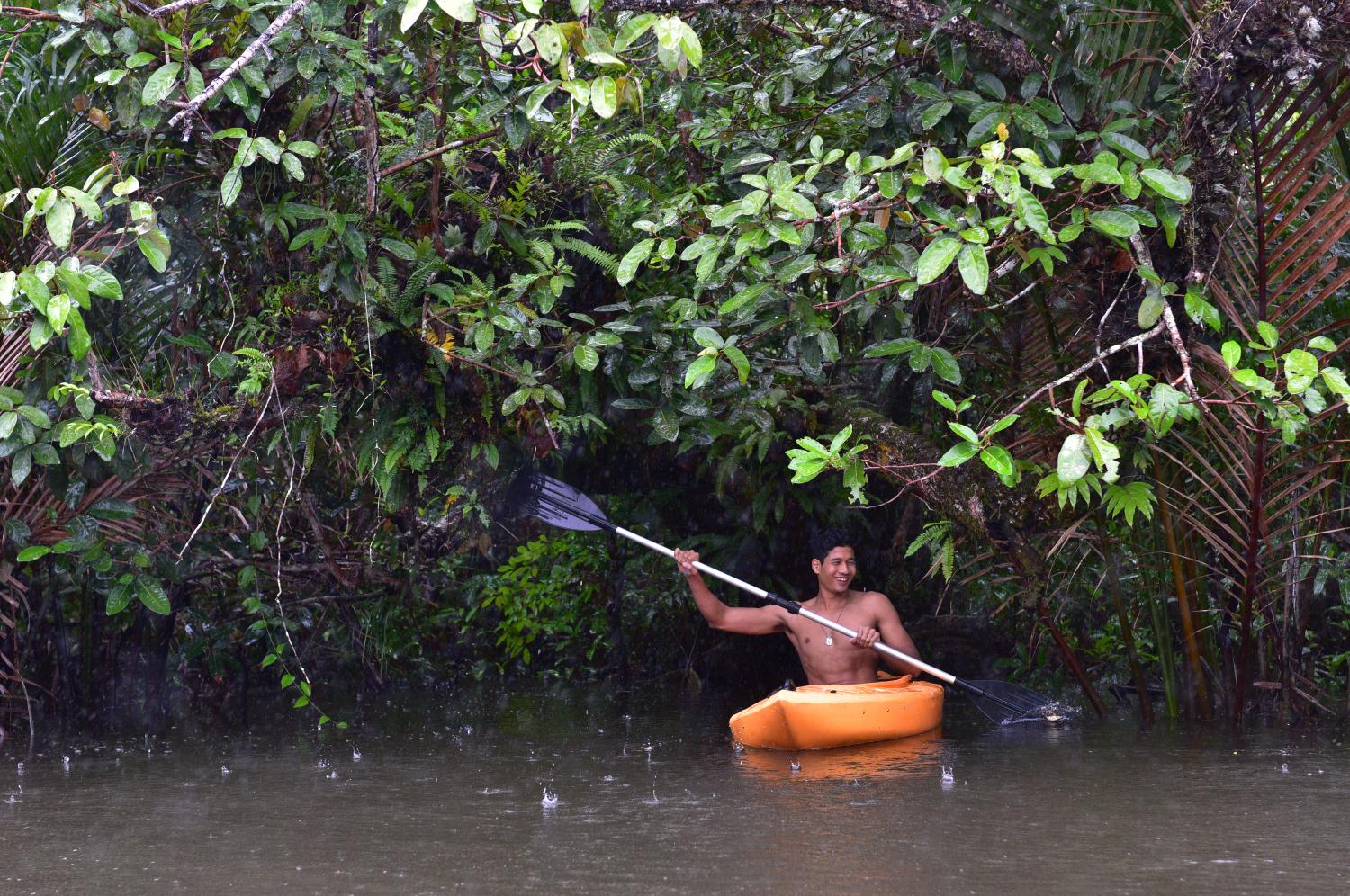
Kayaking.
"Short term for them, it would be much more beneficial to do mining. But when it is mined up, there is nothing they can do. That is how we were able to get a concession because we could offer long-term community uplift and jobs rather than a payday," he said.
Shinta Mani Wild sits on 350 hectares of land. Fifteen private tents are spread over a 1.5km stretch of the stream. After lunch, a butler guided me to the fourth tent, which is quite close to the heart of the property. Surrounded by the leafy woods, my room was tucked into a hilly riverbank. Each tent is set up to every 66 acres of forest. (Staying at the edge of the camp, my friend always gasped for breath upon arrival at the dining house.) Not a single tree was cut down during construction. Inspired by bohemianism, my tent was packed with quirky and exuberant characters.
After a good night's rest, I felt fully recharged for the next day's outing. I wore long trousers, sneakers and bug repellent. After breakfast, we got into army jeeps and went out to forage for our meal among grassland. Over a decade ago, villagers were engaged in logging and poaching. Now, they have reclaimed land for cultivation and sold it to wealthy landlords. We came across many edible plants like wild rambutan, ivy gourd and bamboo shoot. Sarorn, an indigenous butler, traced vines and then unearthed wild potatoes deftly.
"Villagers do not have enough rice. They collect and mix them with rice to make porridge, soup and dessert," he said.
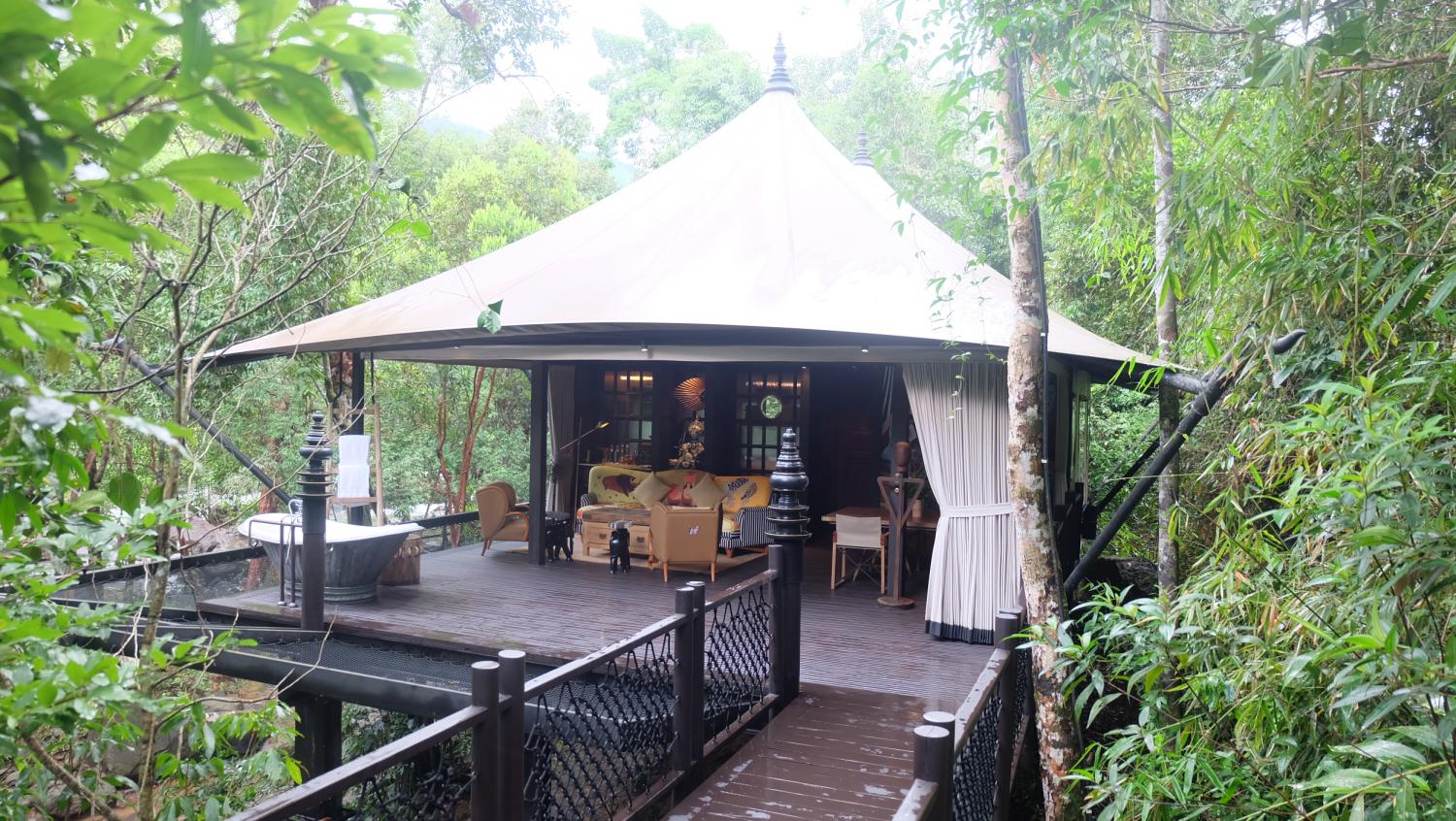
A tent that draws inspiration from bohemianism. (Photo: Thana Boonlert)
A chef sourced ingredients from a natural larder and put them in our 25km radius meal. Wild leaf salad, for example, is a medley of edible delights, including potato crisps and sour leaves. Cambodian sour soup is served with fermented vegetable dumplings and red ants. Banh xeo are rice pancakes filled with various plants. Each meal follows different themes, but local recipes are recommended.
In the afternoon, only three of us joined a daily anti-poaching patrol. Rain came down on the way. We found a tractor and looked around for signs of logging, but to no avail. When we arrived outside of the Phnom Bokor National Park, Channann, supervisor of a patrol unit station for the Wildlife Alliance, heard chainsaw sounds. We turned off our motorcycles and waded through a swampy grassland. Soon, we found an ox cart with firewood and a chainsaw, but the poachers had managed to run away. In Cambodia, an owner is required to register a chainsaw.
"We are outside of the protected area. If we find them, we can only introduce to them what is legal and illegal," he said. "But if they are found in the protected area, we arrest them and have them sign documents. If woods aren't rare and endangered, they will pay fines. But if they cut rare wood, they will go to jail."
According to their statistics, rangers have confiscated thousands of illegal wood and chainsaws so far. Other seized tools include explosives, guns, shockers and machetes. Shinta Mani Wild dedicates a portion of its income to employing staff. At the heart of ecotourism, visitors get the chance to take part in environmental stewardship, which in turn brings jobs to community members in a sustainable way. Before the camp was built, many staff were poachers and loggers because the region had little infrastructure and job opportunities.
"We want to promote travel with purpose," said Steyn. "When people come here, it makes a direct impact on conservation and community upliftment."
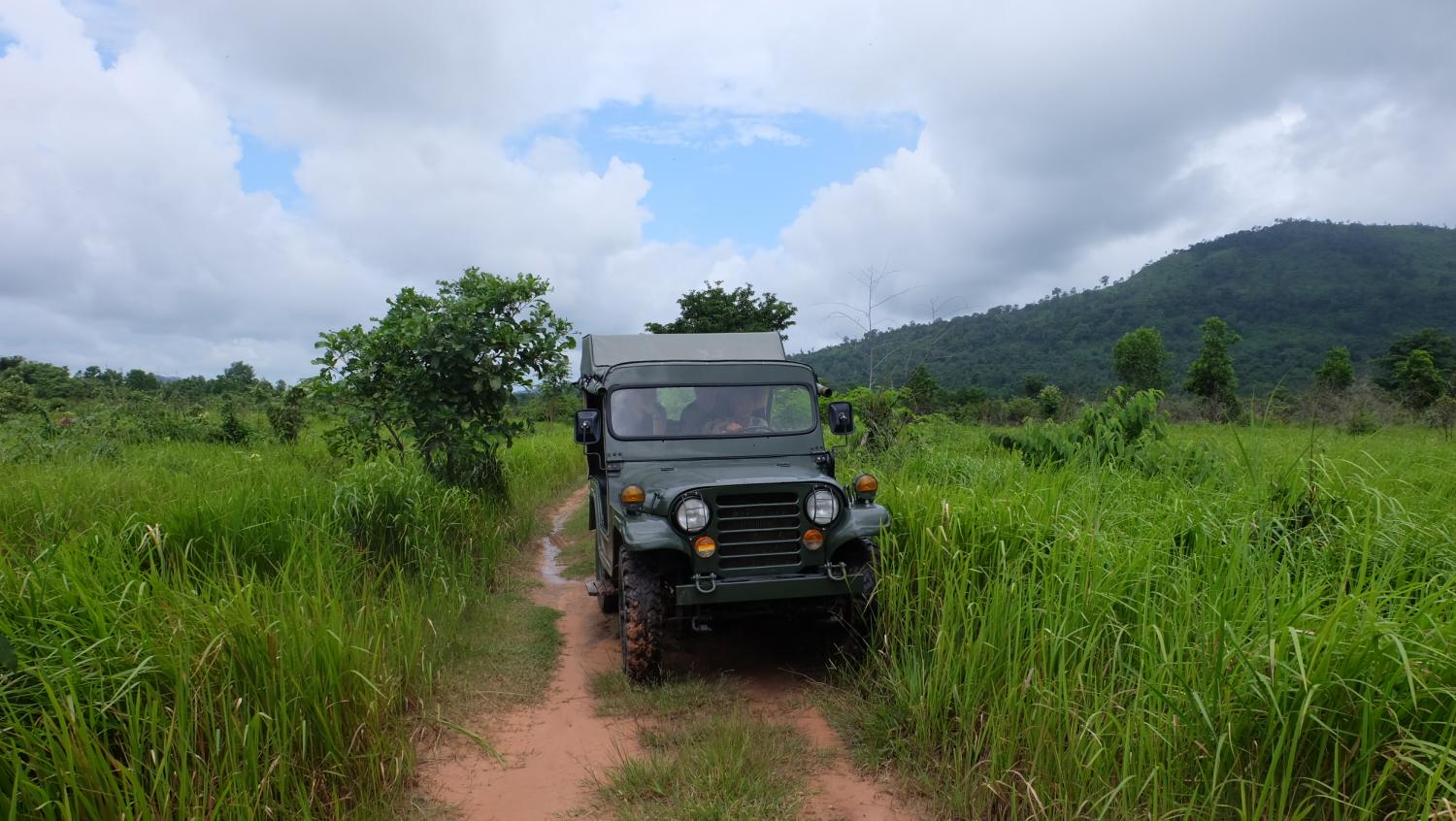
Guests go on a foraging trip. (Photo: Thana Boonlert)

In collaboration with partners, Shinta Mani Wild offers training, community outreach and environmental education programmes to villagers. Sarorn is a success story of how the camp can really make a difference for the community. With support, he has gradually risen from a cart driver to a butler. After taking classes in English for five months, he continued to practice via a smartphone and interact with guests every day. In Steyn's words, butlers are "magic makers" to guests.
"The ultimate goal is to identify students in the local ecosystem, build them up, and have them come back to develop the area," he said.
Opening in December 2018, Shinta Mani Wild has become a popular destination for international guests, especially from the US, the UK and Europe. After a year and a few months, the coronavirus pandemic brought the world to a standstill. Except for a period of complete lockdown, domestic tourism and a quarantine bubble threw a lifeline to the camp until the end of 2021, when it welcomed foreign tourists again. Yet the regional market is not fully tapped. While a large number of guests fly from Singapore, Hong Kong and Taiwan, only a few come from Thailand, despite its proximity.
"We are hoping to raise some awareness among those in Bangkok. A short flight. Two hours on a new highway," he said.
Improvement in connectivity was a boon to our journey. Thai Vietjet commenced direct flights between Bangkok and Phnom Penh on March 16 last year. Currently, the airline operates two flights per day between the cities. Upon arrival at the airport, we got onto the new highway that opened in December last year. It cuts travel time by two hours, to just 90 minutes depending on traffic.
However, blackouts occur sometimes. In line with Bensley's white paper, the camp is planning a transition to solar, wind and hydropower.
"For us, sustainability right now focuses on community conservation. On the property, we do whatever we can. No single-use plastic. Food waste is processed at a fly farm. The next phase of the white paper would be power generation," he said.
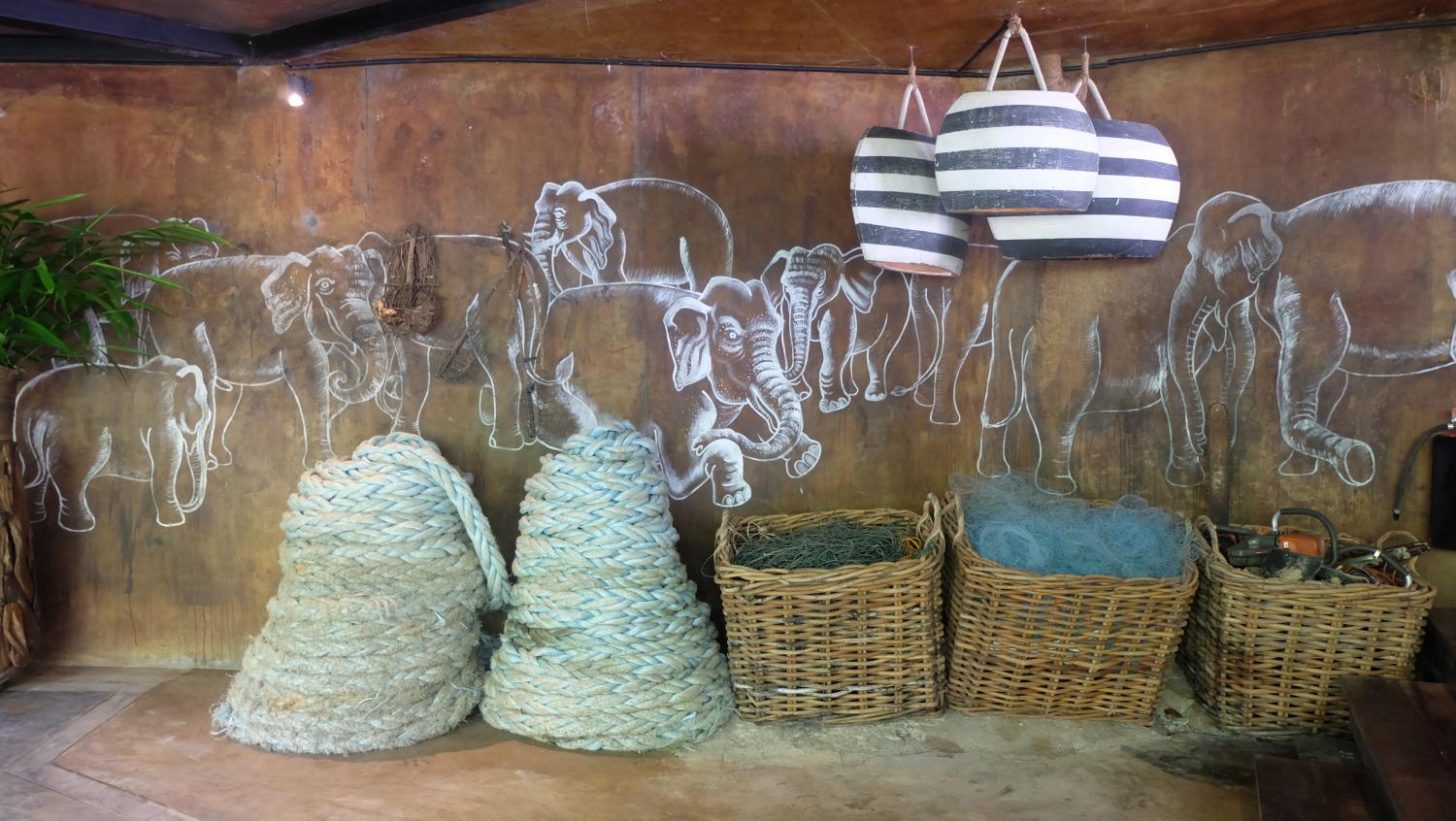
Snares collected by rangers during an anti-poaching patrol. (Photo: Thana Boonlert)

At Shinta Mani Wild, guests enjoy a view of the Cardamom National Park and the Tmor Rung River. (Photo: Thana Boonlert)
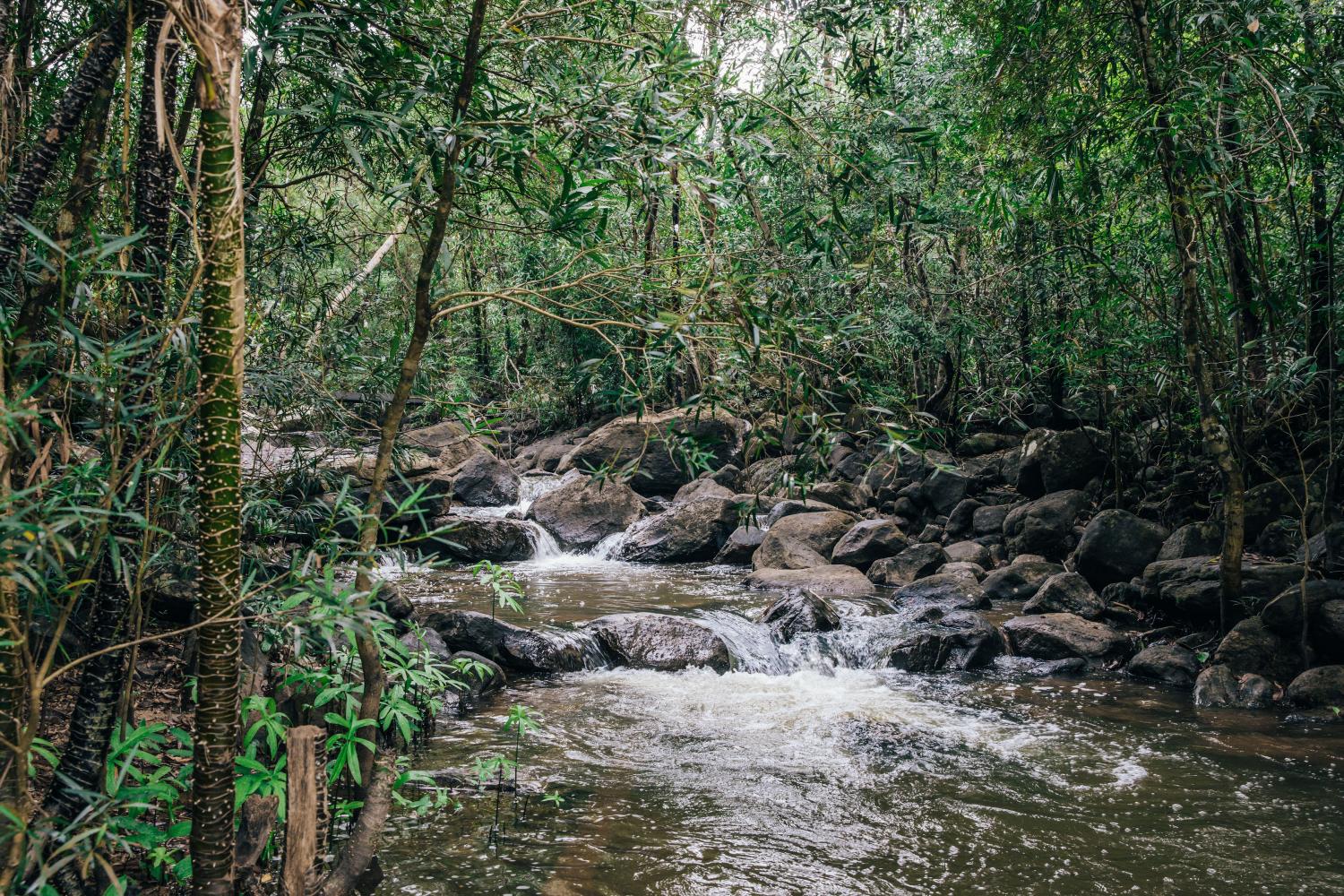
Guests can adventure in the wild.
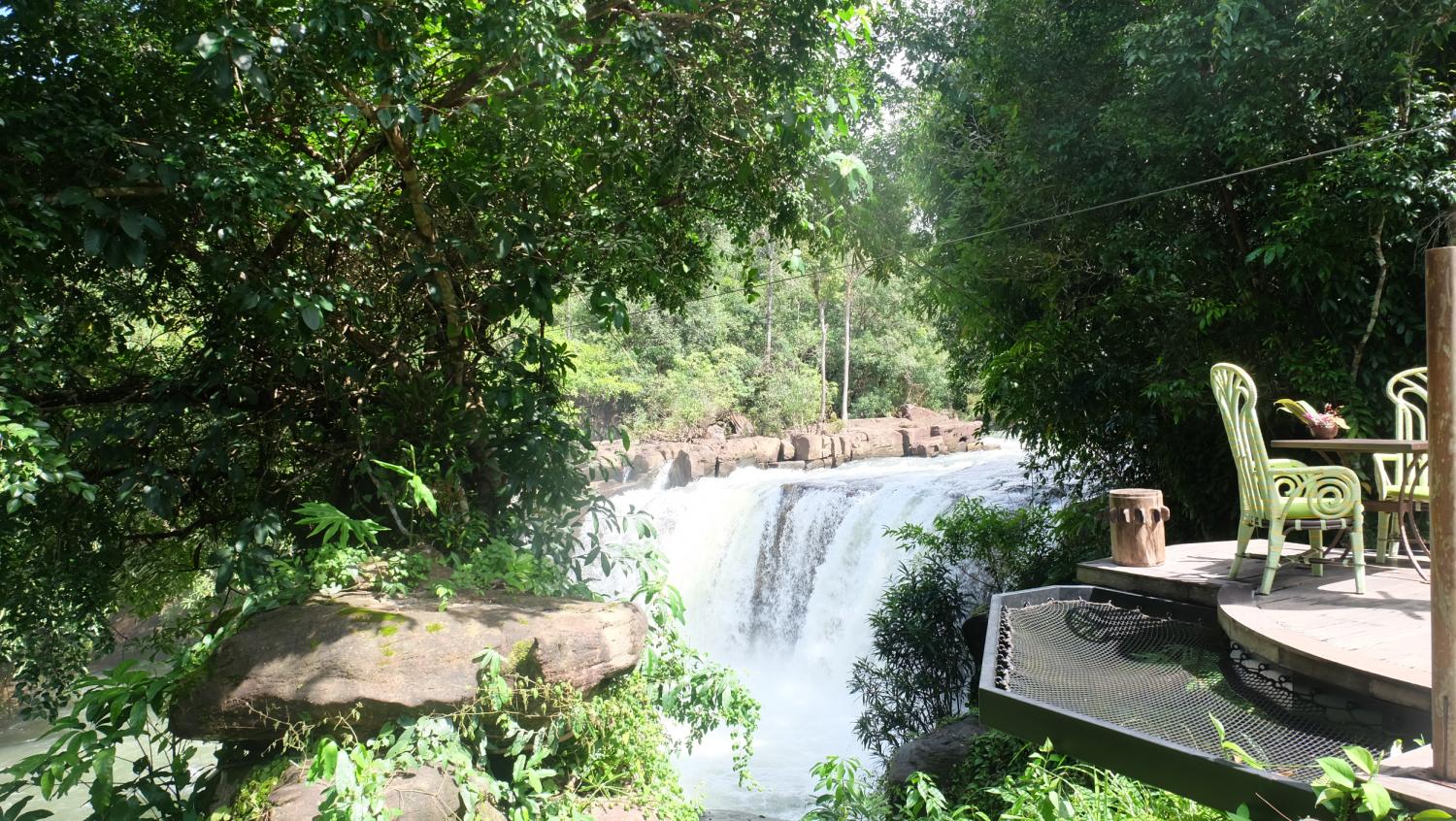
Landing Zone Bar is adjacent to the waterfall. (Photo: Thana Boonlert)
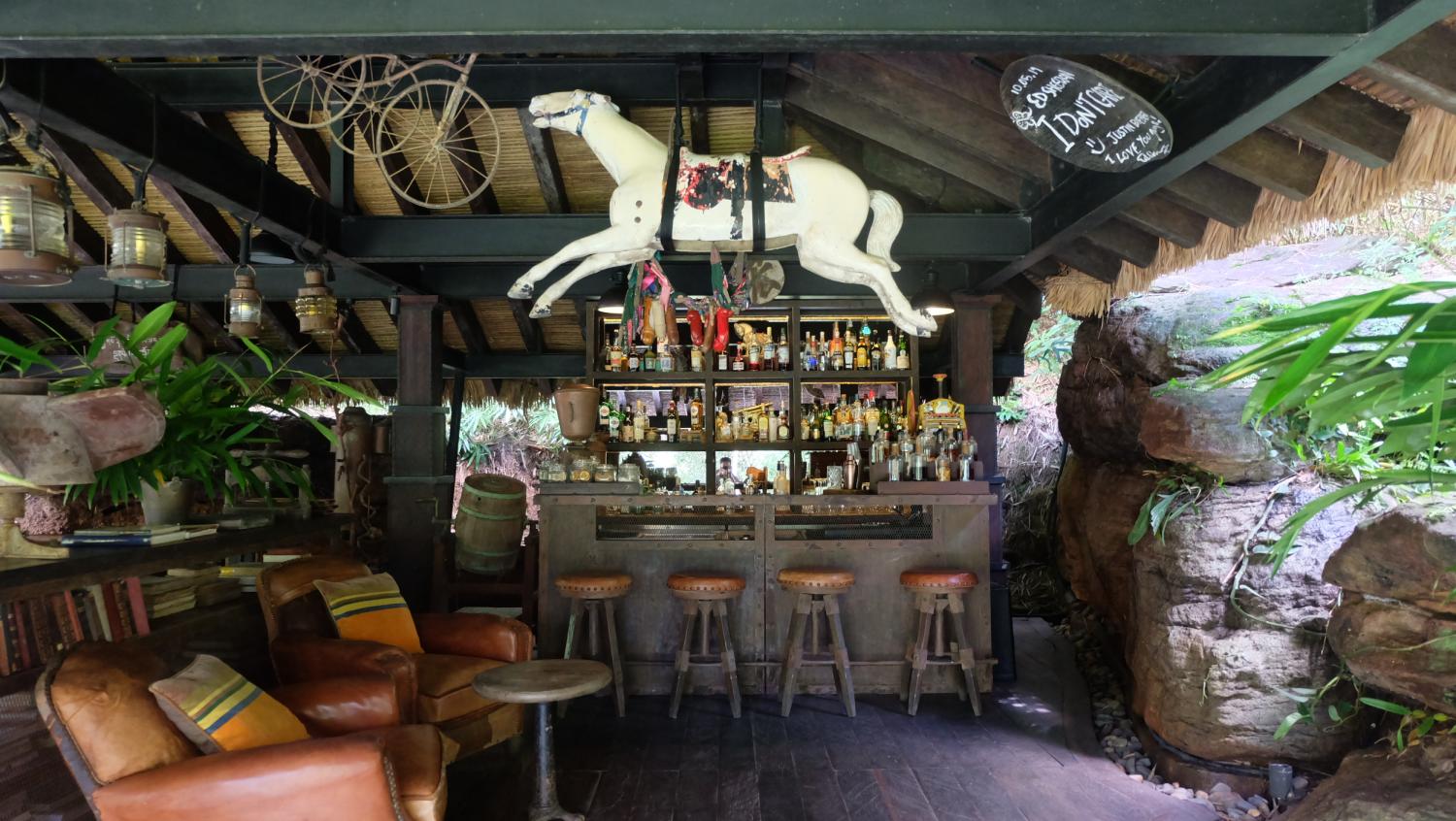
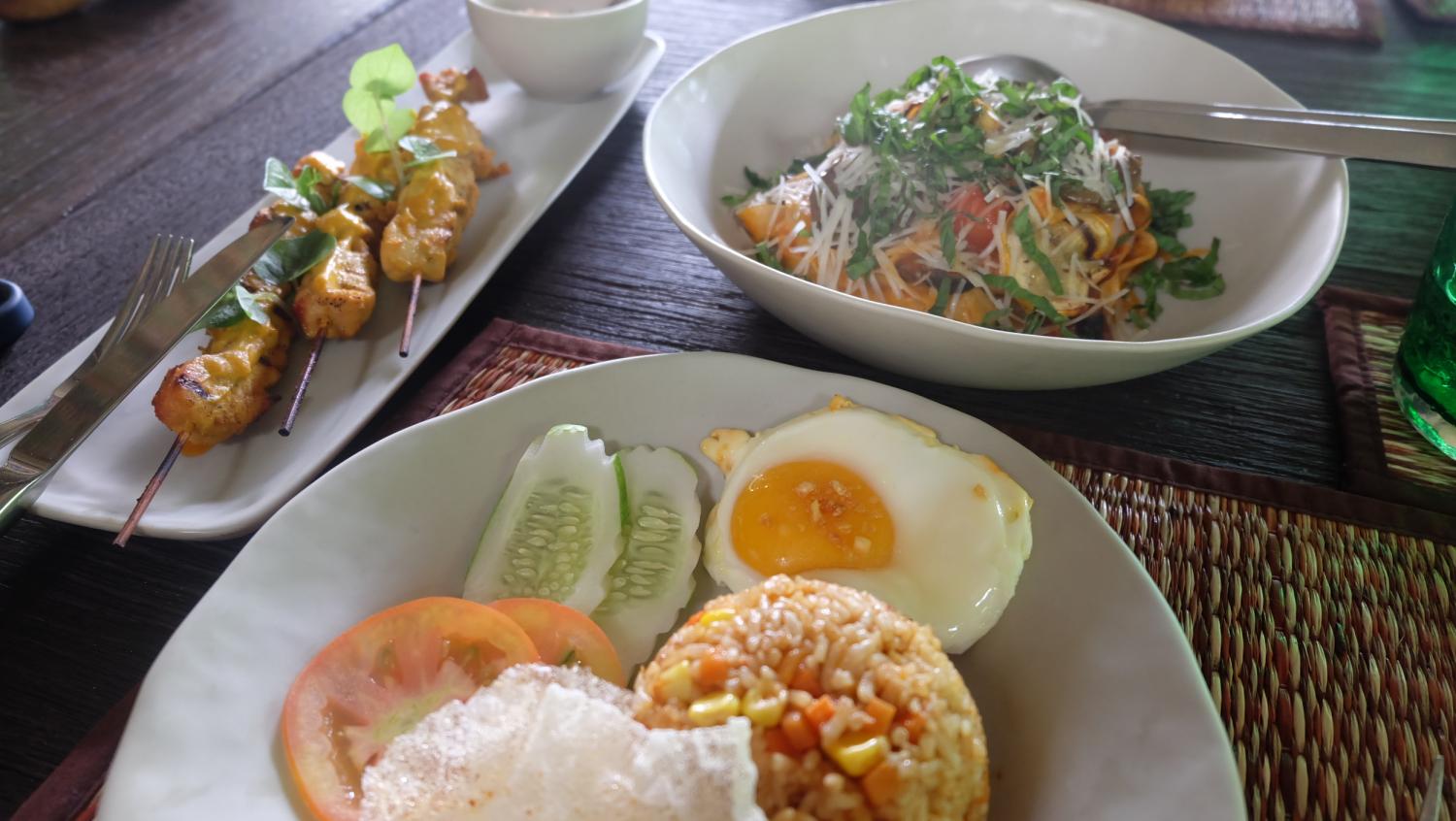
Chicken skewers, nasi goreng and pappardelle with tomato sauce. (Photo: Thana Boonlert)

